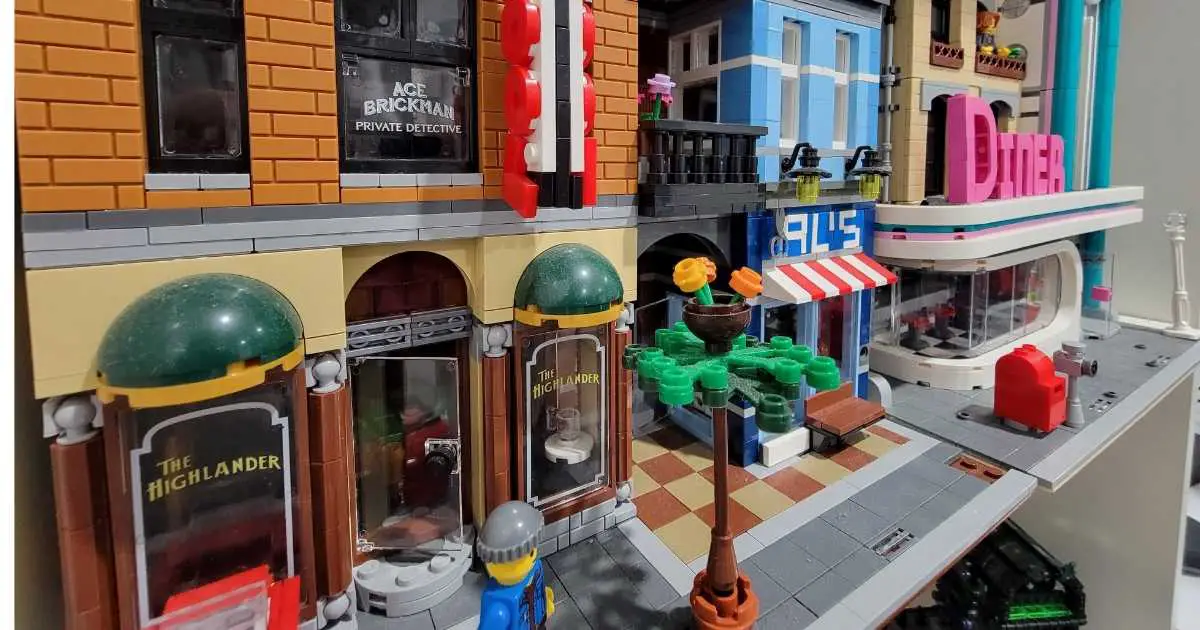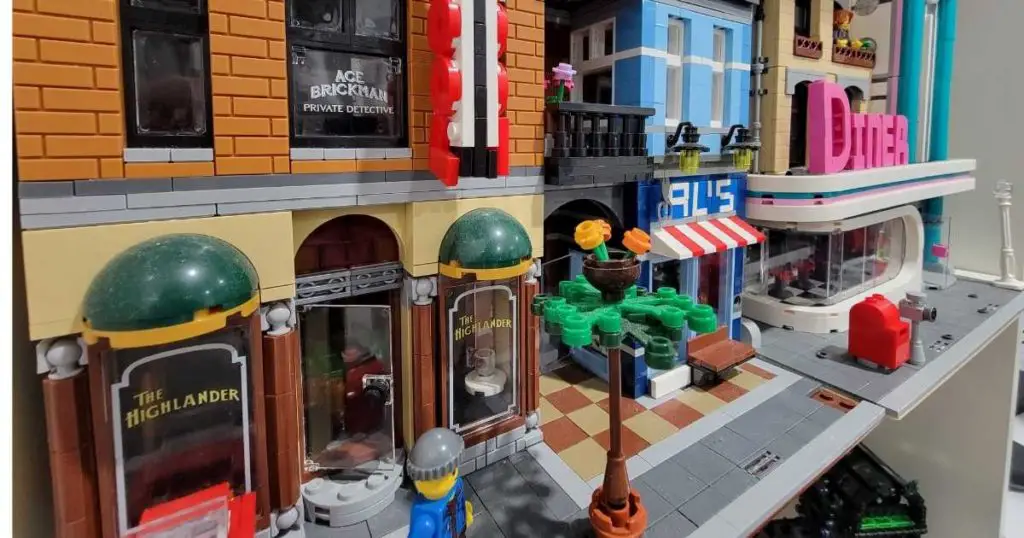
As a Lego investor or collector, do you ever make your buying decisions based on when a Lego set is supposed to retire, and try to figure out how long the shelf life is for the sets you’re interested in?
The average shelf life of a Lego set is slightly over 14 months before they retire. This was calculated based on the information of approximately 2,100 sets that have been launched and retired since 2016 (Source). However, there is a significant difference in life of a set based on Theme, Sub Themes, and Size of the sets.
Setting a buying plan according to the retirement dates can help to use your money in more efficient manner. As a Lego investor, it can help you to avoid tying up large amount of money as inventory for longer periods of time. This is especially true for beginning investors as you may have to sit on your inventory until the value of the Lego sets appreciate.

So how much variance is there in shelf life between different themes? And how does this help you make smarter buying decisions when it comes to investing in Lego sets? Let’s take a look at the details. This will help you to understand how long Lego sets are usually on the shelves before they retire.
When do Lego sets retire each year?
Lego sets typically retire twice a year – at the end of July and December. As you can see in below table, of the 2100 sets we looked at, 80% of the sets retired at the end of December. This means that you should plan to buy a majority of your retiring sets towards the end of each calendar year.
One thing to note is that retired does not mean that the retailers will stop selling them. It means that Lego Group will stop producing them in their factories. However, some retailers may still have stock to sell a month or two after retirement, or sometimes even longer.
| Months | % of Retire Dates |
| Jan | 0.1% |
| Mar | 1.3% |
| Apr | 2.9% |
| May | 0.4% |
| Jun | 0.2% |
| Jul | 11.3% |
| Aug | 2.9% |
| Sep | 0.4% |
| Nov | 0.3% |
| Dec | 80.1% |
What is the average shelf life of each LEGO theme?
From talking to the community of Lego investors, the general understanding of shelf life seems to be that licensed themes (e.g. Harry Potter, Jurassic World) will stay on the shelves for about 2 years before they retire, while many larger sets like Creator Expert Modular, Star Wars UCS type of sets will be on the shelf for a longer period of time.
Let’s see if that’s true!
Below is the breakdown of some of the popular Lego themes and what their shelf lives were.
Architecture – Both Landmark and Skyline sets averaged slightly over 2 years before they retired. Skyline had Shanghai 21039 and San Francisco 21043 with 3 years of shelf life while all others had 2 years. For the Landmark series of Lego sets, the shelf life varied based on piece counts. Larger sets like US Capitol 21030, Empire State Building 21046 and Trafalgar Square 21045 all had over 2 years of shelf life while smaller sets retired within 2 years.
| Sub-Themes | Shelf Life (in months) | # of Sets |
| Landmark Series | 26.2 | 9 |
| Skylines | 27.5 | 8 |
Brickheadz – The average shelf life for Brickheadz was around 9 months. With the exception of Seasonal Brickheadz and a few other exceptions, almost all sets retired in the same year they were launched. For Seasonal Brickheadz, most of them had shelf lives of about 2 years.
Creator Expert – As suspected, Creator Expert sets had one of the longest shelf lives of all LEGO themes. The Modular Buildings, Creator Expert Vehicles, and Fairground sets all seem to have shelf life close to 3 years on average, while Winter Village sets were closer to 2 years.
In addition to being on the shelves for a longer period, they will also take up a lot of your storage space, as most the Creator Expert sets are large in size.
| Subtheme | Average of Shelf Life (in Months) | # of Sets |
| Buildings | 33.5 | 2 |
| Fairground | 37.0 | 2 |
| Modular Buildings Collection | 36.0 | 3 |
| Trains | 18.0 | 1 |
| Vehicles | 36.0 | 5 |
| Vestas | 25.3 | 1 |
| Winter Village | 27.0 | 4 |
Based on ~2100 sets retired from 2016 to 2020
Harry Potter – Harry Potter sets varied greatly not by Sub Themes, but more by size/piece count of the sets. For medium to large sets like Great Hall 75954 or Whomping Willow 75953, the average shelf life is close to 3 years, while smaller sets like Aragog’s Lair and Expecto Patronum lasted less than 2 years.
| Set name | Pieces | Shelf Life (in Months) | Set name | Pieces | Shelf Life (in Months) | |
| Hogwarts Great Hall | 878 | 36.0 | Forbidden Forest: Umbridge’s Encounter | 253 | 19.0 | |
| Hogwarts Whomping Willow | 753 | 41.0 | Hogwarts Moment: Herbology Class | 233 | 12.0 | |
| Newt’s Case of Magical Creatures | 694 | 17.0 | Hogwarts Room of Requirement | 193 | 19.0 | |
| Quidditch Match | 500 | 29.0 | The Rise of Voldemort | 184 | 17.0 | |
| Hagrid’s Hut: Buckbeak’s Rescue | 496 | 31.0 | Aragog’s Lair | 157 | 17.0 | |
| Beauxbatons’ Carriage: Arrival at Hogwarts | 430 | 17.0 | Hogwarts Gryffindor Dorms | 148 | 2.2 | |
| The Knight Bus | 403 | 31.0 | Grindelwald’s Escape | 132 | 17.0 | |
| Diagon Alley | 374 | 4.5 | Expecto Patronum | 121 | 19.0 | |
| Harry Potter Advent Calendar | 335 | 4.0 | Hogwarts Students Accessory Set | 53 | 19.0 | |
| Monster Book of Monsters | 319 | 2.0 | Harry’s Journey to Hogwarts | 40 | 17.0 | |
| Harry Potter Advent Calendar | 305 | 4.0 | Wizarding World Minifigure Accessory Set | 33 | 7.0 | |
| Harry Potter Advent Calendar | 274 | 4.0 | Harry Potter and Hedwig: Owl Delivery | 31 | 19.0 | |
| Hungarian Horntail Triwizard Challenge | 265 | 19.0 |
Ideas – Most of Idea sets averaged less than 2 years of shelf life, but out of 16 total sets over the 5-year period, 2 of the sets were re-released due to their high popularity. Also, sets like the Tree House 21318 and Central Perk 21319 sets were on the shelves longer than 2 years due to their popularity.
Jurassic World – Most of Jurassic World sets were released in the month of April and June and retired the following December. So their shelf life has been less than 2 years with few exceptions (e.g. the T.Rex Rampage 75936)
Minecraft – Minecraft sets shelf lives vary greatly from less than 1 year to 3 years. And there doesn’t seem to be any pattern on what determines less than 1 year vs 3 years. For example, Mountain Cave set had a shelf life of only 18 months, but there have been smaller sets like Pirate Ship 21152 which had a shelf life of 3 years.
Ninjago – There were 146 Ninjago sets launched and retired between 2016 and 2021, and over 90% of them retired within 19 months. None of the Ninjago sets stayed on for more than 2.5 years, even for large sets like Destiny’s Bounty and the highly popular 2017 Ninjago City.
Speed Champions – Most of Speed Champions sets have consistently retired within 2 years of launch. Most of them will launch during the first few months of each year and retire in December of following year. The only exception to this are the last 6-stud sets retired in July 2021 which could have been due to manufacturing delays during a global pandemic.
Star Wars – During the period of 2016 to 2021, Lego Group launched and retired over 200 Star Wars sets. That is more sets than the City and Friends sets. Only 6 sets have stayed on the shelf more than 2 years and believe it or not, only one of them was a UCS set (care to guess which set?).
There are few sets that have yet to retire that will have greater than 2 years of shelf life, but it’s safe to say that a majority of Star Wars sets will retire within 2 years of their launch.
Do cheaper LEGO sets retire sooner?
Some Lego Investors like to invest in bigger and more expensive sets like Creator Experts or Star Wars UCS sets, while others like smaller and less expensive sets. So what is the relationship between RRP and the shelf lives of these sets? Should you expect bigger and more expensive sets to stay on the shelves longer?
In looking at below graph, you can see that higher RRP sets tend to have slightly longer in shelf life. However, you can also see that majority of the sets have retired within 24 months, especially for sets below $150-$200 range.
So this means that you can expect longer shelf life for sets like Creator Expert and $200+ USC Star Wars, but the majority of other sets will retire within 2 years of their launch.

Do all LEGO sets retire at the same time as other sets in the theme?
As with anything, there are always exceptions to rules. Based on what we saw above, there are some sets that will retire well beyond the average 14 months shelf life and there are some sets that will retire within 1 year of their launch. So here are some exceptions to the rules to think about.
- Most Brickheadz sets will retire in the same year they launch except for Seasonal Brickheadz.
- Creator Expert sets will most likely stay more than 2 years on the shelves before they retire.
- Popular Idea sets are susceptible to re-release or pushing back retirement dates.
- Larger sets for Architecture Landmark, Harry Potter and Ninjago are likely to be on the shelf for more than 2 years.
- Minecraft theme has more unpredictable shelf life than other themes.
- Very large Star Wars UCS sets (4000+ pieces) will have a long shelf life, but other UCS sets will likely retire within 2 years.
When should I buy a LEGO set?
If you are a Lego investor or collector, and you want to buy sets before they retire, then it is important to understand the average theme shelf life.
When you are considering buying a set, a good strategy is to wait until it has passed the half-way point in the average shelf life of that theme.
So for example, if you’re considering buying a Star Wars set, then you could start buying it after it has been on the shelves for 1 year. This would reduce the amount of time that the set will sit on your shelves before it retires. And of course, that means it will start growing in value sooner.
Of course, this is just one part of building a great buying strategy for your Lego investments or your collection. If you want to learn more about selling Lego sets, check out this article for five great tips for selling Lego on Facebook Marketplace.
